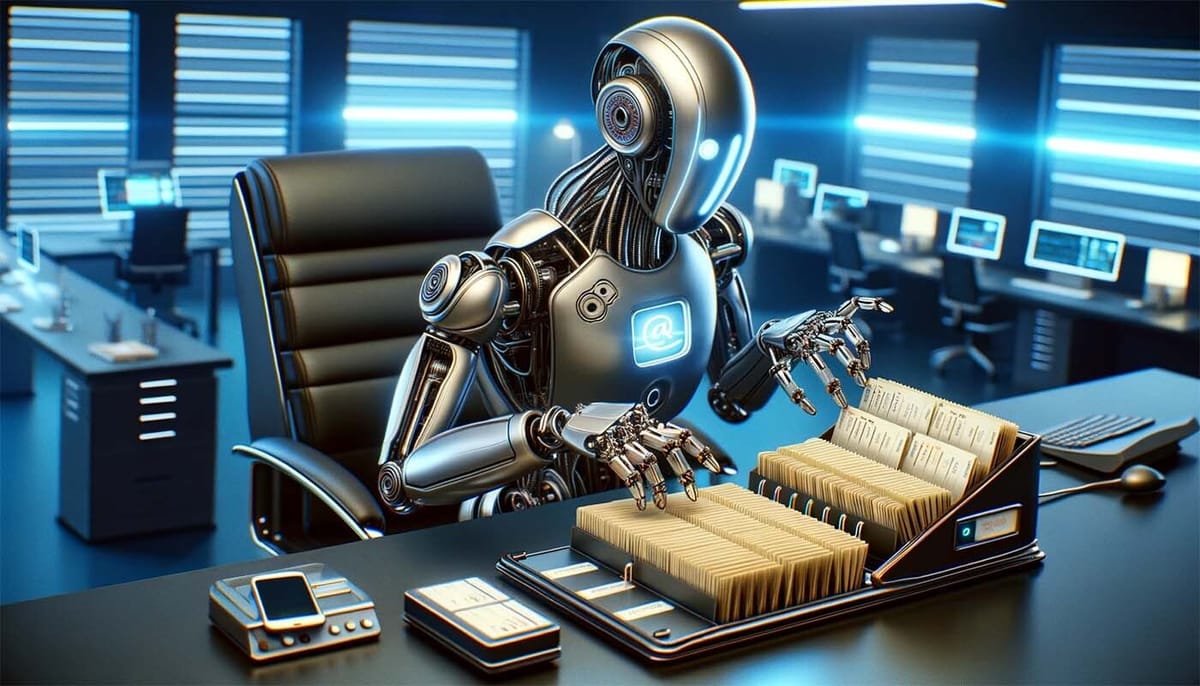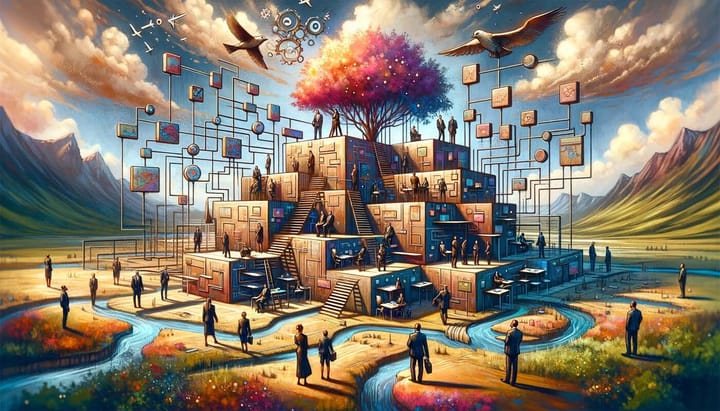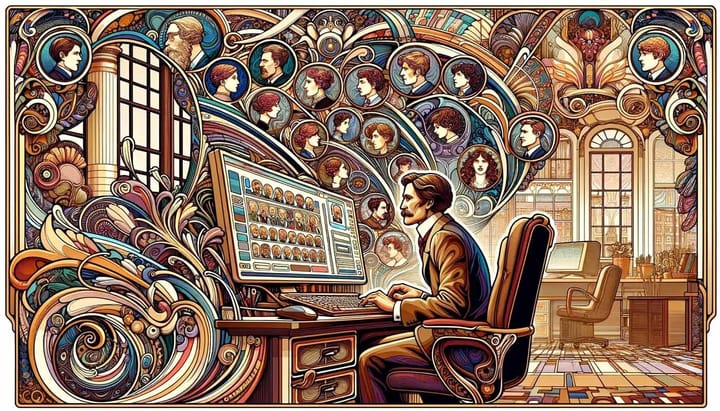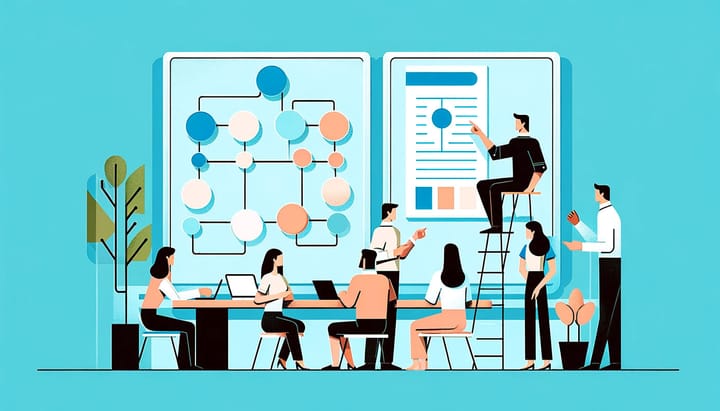From Analog to Digital: The Perfect Modern Rolodex for Your Team
Take a stroll down memory lane to appreciate the Rolodex's undeniable value while exploring the perfect modern Rolodex solution for your team.

The clickity-clack of flipping through a Rolodex was once the soundtrack of office life.
For decades, these rotating file devices sat faithfully on desks, holding business cards, contact details, and secrets of success. But, like all analog things in a digital world, the trusty Rolodex has gone the way of the rotary phone. While this analog address book is obsolete, the need to easily manage professional connections remains.
Let's take a stroll down memory lane to see what made the Rolodex so valuable and how a digital Rolodex solution can enhance your internal network and professional connections.
Why Was the Original Rolodex So Loved?
For those of you too young to use a Rolodex, like me, it was a physical card file system people used to store contact information before smartphones. It was a rotating cabinet with slots for business cards. To find a contact, you'd spin the Rolodex until the card you wanted popped up.
But what was it about this simple rotating file that inspired such devotion from professionals?
Part of the Rolodex's appeal was its tactile nature. Spinning the cabinet and flipping through the little cards was satisfying in a way the digital world can never replicate.
It also allowed for serendipitous discoveries. When rummaging through the Rolodex, people would often come across a card they hadn't thought about in years. This would spark memories and ideas, leading to reconnections that may have otherwise never happened.
Of course, maintaining it served as a reminder of relationship-building as an ongoing process. Taking the time to ensure contact details were up to date showed your network you valued them as people, not just names on a screen.
But perhaps most importantly, the Rolodex became inextricably linked with the peoples' professional identities. It was a symbol of the network they'd worked hard to cultivate. So it's no wonder letting go doesn't come easily, even in the digital world.
The Rise of the Digital Rolodex
Think of a digital Rolodex as an advanced, networked version of the old spinning cabinet. Instead of cards, it stores all your contacts' info digitally. And instead of being confined to your desk, it's accessible from anywhere via the cloud.
One of the biggest advantages a digital Rolodex provides is the ability to strengthen your internal network. All too often, companies overlook the wealth of information they already have under their own roof. But a digital Rolodex allows you to tap into this untapped potential.
Picture this scenario: you're searching your Rolodex for someone with marketing expertise but see the person is no longer in that role. Instead of seeing them as "lost", view them as an opportunity. Chances are this employee still has relevant knowledge, even if their title has changed.
With a digital system, you can easily discover how this marketing guru is now connected to others still at your company. Perhaps their new co-workers in product development would welcome some strategic marketing guidance on a project. A quick introduction later, and you've facilitated an internal collaboration without even leaving your desk.
It's like a modern version of "It's a small world" within your own four walls. Your digital Rolodex helps you map and leverage the hidden connections between departments, teams, and individual employees. Over time, as more staff add their profiles, the network effect will reveal a web of cross-functional expertise ready to be tapped.
With a few clicks, you can optimize internal problem-solving, encourage innovation through multi-disciplinary partnerships, and even identify top performers who may be ready for more responsibility elsewhere in the organization. All without posting a single job or searching external databases.
The Perfect Modern Rolodex for Your Team
In organizations today the original Rolodex has been replaced by various digital versions. In most cases, the new organizational Rolodex is the Excel spreadsheet.
And yes even though an Excel spreadsheet does count as a digital Rolodex, it quickly becomes filled with outdated and incorrect information just like the original Rolodex.
So what then is the best solution for a modern Rolodex? Well, for external contacts and connections a CRM would be the go-to tool. But what about contacts inside your organization?
Enter the employee directory, the perfect digital evolution of the Rolodex for your internal network.
Modern employee directory solutions allow you to store all your employee contact information in one centralized, searchable place. No more flipping through pages or multiple spreadsheet versions to find that one employee who just started last month. With a click of a button, any information you could want is right at your fingertips.
Think of an employee directory like a smart Rolodex.
It knows what you're looking for and makes finding people effortless. Typing a name brings up not just that employee's info, but related details like department, location, manager, and more. Contact details like phone, email, and IM handle are easily accessible without digging through messy paperwork.
An Employee Directory is Like A Swiss Army Knife
An employee directory handles more than just contacts. Think of it like a Swiss Army knife - a single tool with a variety of handy functions.
Beyond the basic who, what, and where of each employee, modern directories offer extras like organizational charts, team views, skills databases, and more.
For example:
- Need to find experts in a certain technology? Search the skills database.
- Want to see who's on vacation next month? Check the out-of-office calendar.
- Struggling to remember which departments report to which VPs? Pull up the org chart.
An employee directory evolves into a central hub of company knowledge rather than a simple phone book. With the right software, you can even pull employee data from your existing HR systems like payroll or benefits enrollment. Automatic syncing means the directory always reflects the real-time state of your workforce.
No more stale, out-of-date records dragging down your productivity.
Of course, the directory shouldn't just be a one-way street. Empower employees to update their own profiles. Allow adding profile photos so new hires can put names to their faces. Let direct reports note preferred names or pronouns. Give staff ownership over how they represent themselves to the company. After all, you want your directory to feel more like a social network than an HR form.
Getting Started with a Modern Employee Directory Solution
By now I'm sure you see the clear advantages a digital employee directory brings over an old paper Rolodex or outdated static Excel spreadsheet.
But change, as they say, is hard. So where do you start?
Start by signing up for our 14-day free trial. Where you will get to experience all the benefits of OneDirectory's modern employee directory solution.
After experiencing OneDirectory your team will quickly forget about the good old days of the Rolodex.


